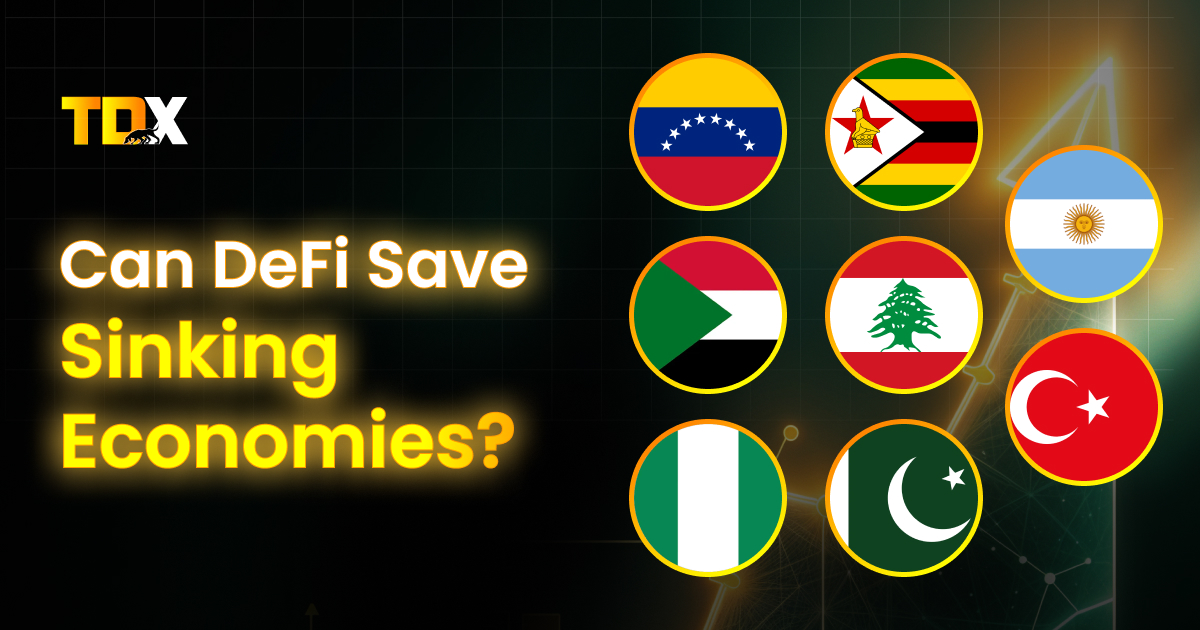




How to Analyze Tokenomics for Cryptocurrency Projects Before an IDO
Thinking about exploring crypto projects before participating in an IDO? Mastering tokenomics is essential. It’s your roadmap for making informed investment choices in the crypto space. Tokenomics outlines crucial details like the total number of tokens, which includes both maximum supply and circulating supply and how transaction fees are applied.
Understanding these elements provides a foundation to assess if a project is equitable and capable of enduring over time. Tokenomics offers insights into how supply and demand factors, such as token burns and the release of new tokens, can affect market value and project growth. Governance tokens also play a pivotal role by influencing the project’s trajectory and market stature.
For newcomers, the basics may seem daunting but no worries. Grasping a token’s function, its distribution among holders, and the integration of smart contracts can simplify your journey through the crypto world. With this knowledge, you will be ready to spot promising opportunities and recognize potential pitfalls. Curious to learn more? Let’s dive deeper!


How Tokenomics Reflects Project Potential
Tokenomics is all about understanding a project’s financial setup, and it plays a crucial role in determining whether a crypto project is likely to thrive or falter. Well-structured tokenomics can be a strong indicator of a project’s long-term success. Projects with solid tokenomics don’t just focus on raising funds; they have clear plans for attracting users and maintaining the value of their crypto tokens.
When evaluating a project’s tokenomics, consider the token supply, including the maximum token supply and how many tokens are held by token holders. A fixed supply or a well-managed circulating supply can drive up the market value through increased demand. Projects often use token burns or allocate tokens strategically to manage supply and demand characteristics, which can impact the token’s price positively.


Strong tokenomics also involves the use of governance tokens, which give token holders a say in the project’s future. This approach can increase user engagement and ensure that the community’s interests are aligned with the project’s growth. Additionally, projects should outline how transaction fees are used, whether to validate transactions or reinvest into the project, helping to maintain the token’s utility.
In contrast, weak tokenomics might result in a risky investment. Projects with an unlimited supply or poor token distribution can lead to pump-and-dump schemes, where early investors may offload their tokens, causing the price to crash. Without a clear token allocation plan, a project might struggle to sustain its market cap and attract new token holders.
Ultimately, understanding a project’s tokenomics provides insight into its economic balance and sustainability. A well-planned tokenomics strategy not only helps in growing the project’s market value but also builds a stable, long-term environment that supports both the project and its community.


Key Elements of Tokenomics
Understanding the foundational components of tokenomics is essential for evaluating a crypto project’s investment potential. Let’s delve into these key elements:
a. Token Utility
Token utility is a crucial aspect of any crypto project. It determines how tokens function within a project’s ecosystem, influencing their demand and value. Examples include governance tokens that allow holders to vote on project decisions, tokens used for accessing exclusive products or services, and staking tokens that let users earn rewards. Tokens with genuine utility tend to maintain stable demand and market value, making them attractive to long-term investors.
b. Token Distribution and Allocation
The way tokens are distributed and allocated significantly affects a project’s stability and decentralization. A higher percentage of tokens allocated to the community and ecosystem fosters sustainability, as it aligns participants’ interests with long-term growth. Conversely, projects where a large portion of tokens is held by the team or early investors risk facing price dumps, which can destabilize the market.
c. Total and Circulating Supply
Understanding the difference between total supply and circulating supply is vital. The total supply refers to the maximum amount of tokens that can exist, while the circulating supply represents the tokens currently available in the market. Projects with a limited token supply can become scarce and more valuable over time, whereas those with an inflationary supply might see their token value decline if demand doesn’t keep up.
d. Vesting and Emissions
Vesting schedules are designed to prevent early investors from dumping tokens, which can crash the market price. These schedules ensure that tokens are gradually released over time, demonstrating a commitment to the project’s long-term growth. A well-structured vesting plan indicates that the team is invested in the token’s future value, fostering trust among investors.
e. Treasury and Reserves
A project’s treasury plays a crucial role in supporting growth, marketing, and resilience. Well-managed treasuries provide a buffer against market volatility and unforeseen events, ensuring the stability of the token economy. This financial reserve allows projects to invest in development and strategic initiatives, maintaining their market cap and supporting overall sustainability.
By understanding these elements of tokenomics, investors can better assess a project’s potential, identify opportunities, and mitigate risks in the ever-evolving world of digital assets.


Real-Life Examples of Good and Bad Tokenomics
Analyzing real-world examples of tokenomics provides invaluable insights into what drives a crypto project’s success or failure. Here are some notable cases:
Successful Tokenomics:
- Ethereum (ETH)
Ethereum is renowned for its robust tokenomics, which contributes to its standing as a leading crypto project. With its native token, ETH, the platform facilitates smart contracts and decentralized applications.
The utility of ETH, combined with its deflationary aspects introduced through token burns via the EIP-1559 upgrade, enhances its market value. The maximum token supply is not capped, allowing for flexibility in network growth, whereas transaction fees are used to regulate the circulating supply, fostering sustainable demand. - Chainlink (LINK)
Chainlink exemplifies good tokenomics through its clear utility in connecting smart contracts with real-world data. LINK tokens are used to pay node operators, ensuring demand is tied to network usage.
The initial distribution included a significant portion for development and ecosystem growth, aligning long-term incentives with the project’s objectives. Chainlink’s governance and staking mechanisms further reinforce its market stability and investor confidence.
Poor Tokenomics:
- BitConnect (BCC)
BitConnect is a classic example of poor tokenomics leading to a project’s downfall. It promised unrealistic returns and relied heavily on a referral-based system, resembling a Ponzi scheme.
The lack of genuine utility and transparency in token allocation led to a collapse in market value once public trust eroded. The project’s token economics were unsustainable, resulting in significant financial losses for token holders and early investors. - OneCoin
OneCoin was notorious for its flawed tokenomics, which ultimately led to its classification as a scam. It lacked a blockchain, making the circulating supply and total supply figures unverifiable.
This absence of transparency, coupled with its centralized control and limited utility, contributed to its failure. The project used deceptive marketing tactics to raise funds, but without genuine token demand or a viable economic model, it was bound to collapse.
By examining these examples, potential investors can better discern the importance of sound tokenomics in driving project success and avoiding pitfalls.
Successful projects focus on utility, transparent token issuance, and strategic token allocation, while failures often stem from overpromising and underdelivering on these critical aspects. Understanding these dynamics helps stakeholders make informed decisions in the volatile crypto market.


How to Use Tokenomics for Investment Decisions
Here’s a straightforward guide to using tokenomics to make smart moves:
Check Important Metrics
Look at Fully Diluted Valuation (FDV), which shows the total market value if all tokens were available. A high FDV might mean the project is overvalued if the current prices don’t match up. For DeFi projects, check Total Value Locked (TVL) to see how much capital is tied up in the protocol, giving you a sense of its market demand.
Understand Supply
Pay attention to the token supply details, like maximum supply and what’s currently circulating. If the supply is fixed, that could mean the token might become more valuable if demand goes up. On the other hand, if more tokens keep coming out without more buyers, the value might drop.
Vesting Schedules
Look at when new tokens will be released into the market. A good vesting schedule means tokens are released gradually, aligning with long-term goals and reducing sudden price drops.
Use Analysis Tools
Platforms like Nansen, DeFi Llama, and Dune Analytics are great for digging into token data. They can show you info about token allocations, transaction fees, and governance dynamics.
Assess Utility and Demand
Consider what the token is used for. Tokens that have clear purposes, like paying fees or validating transactions, tend to hold their value better. See how these tokens fit into the bigger picture of the project’s market cap.
Look at Governance and Community
Governance tokens let holders have a say in project decisions. A strong community and active participation can be a good sign for long-term value.
If you focus on these aspects, you might get a clearer picture of a crypto-related project’s potential and make better investment choices in the crypto world.


Tips for Beginners
If you are new to crypto, here are some straightforward tips to help you get started:
Start Small
It is wise to invest a modest amount at first to get familiar with market swings and how crypto behaves.
Grasp Tokenomics Basics
Understanding tokenomics is key. Learn about token supply, maximum supply, and circulating supply, and how these affect the market value and token demand.
Do Your Own Research
Before jumping in, research the crypto projects thoroughly. Check out the project’s whitepaper and ensure the utility tokens have practical uses that could boost demand.
Be Careful with the Hype
Be wary of projects boasting quick profits or involved in pump-and-dump schemes. Pay attention to how many tokens are issued and if the distribution looks balanced.
Understand Governance
Governance tokens let you vote on project changes. Keep tabs on these developments, as they can influence the project’s direction and your investment.
Stay Informed
Use resources like Reddit, X (former Twitter), and Telegram channels to stay updated on digital currency trends and insights from the community.


Conclusion
Navigating tokenomics is essential for anyone interested in the crypto space. Pay attention to key factors like token supply and maximum supply, as they directly affect market value and demand. Beginners should carefully examine token distribution and vesting schedules to understand how they might influence the circulating supply and token price.
It is also crucial to evaluate the utility of each crypto token and remain cautious about projects where a large chunk of tokens is controlled by the team or insiders. Armed with this knowledge, you’ll be better positioned to assess crypto projects and make informed investment decisions.
40,000 readers 🚀 are getting insights with our media





Article
“Is Ethereum dead?” This is a trending argument that is appearing in various crypto communities and media. Which is not…






Guide
Welcome to the beginner’s guide on Trust Wallet, MetaMask, and Exodus—three most common cryptocurrency wallets for managing your crypto assets….






Article
When Venezuela’s inflation hit 189.8% in 2023 [Central Bank of Venezuela, 2023], Maria’s life savings of 200 million bolivars (enough…






Article
For generations, Indians have trusted one investment: fixed deposits (FDs). If you walk into any Indian household, chances are someone…






